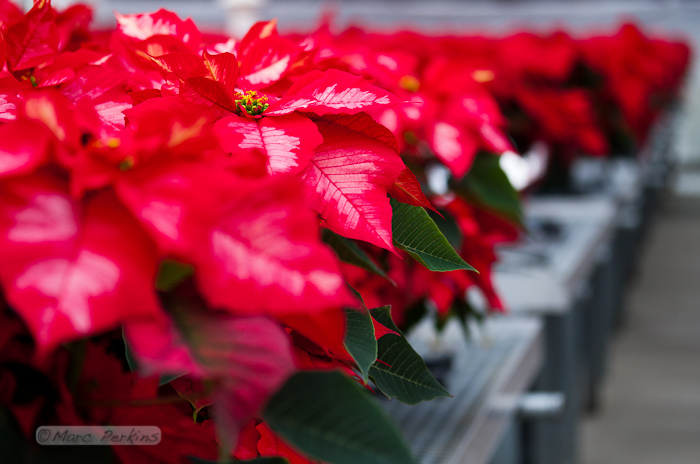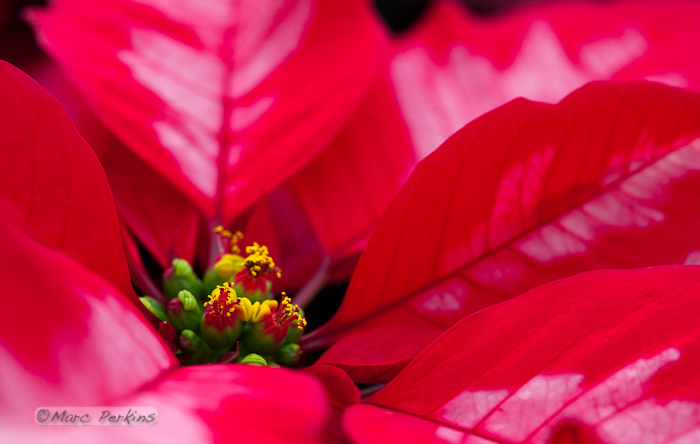
[This is the third in a series of three posts. The first post is: Poinsettias up close: where are the flowers? and the second post is: Poinsettia flower closeups take two: getting even closer]
In my previous two posts on poinsettia (Euphorbia pulcherrima) flowers I showed that the flowers are much smaller than most folks think (the large red structures are bracts, not petals) and was able to get some closeups of the inflorescences illustrating their anatomy.
In case you’ve forgotten, the inflorescences of poinsettias are not your typical boring flower: multiple male flowers and a single female flower are surrounded by a sphere of fused bracts called an involucre, out of which the flowers emerge. The involucres often have nectar glands on them, which look like two green or yellow lips.

Frustratingly, when I took that first set of pictures I couldn’t find any female flowers on the plants I had. I’ve since learned that this is because the female flowers only develop and extend out of the involucre after the male flowers have matured and produced their pollen (reducing the likelihood of self pollination). So, I waited, and yesterday finally got a chance to photograph the female flowers up close.
Here’s what a female flower looks like coming out of the involucre:

There you can see the divided stigma (where pollen need to be deposited if they are to fertilize the flower’s eggs), the swollen ovary just barely protruding from the involucre, and the style connecting those two.
For more context, we can see that the maturing female flower is next to cyanthia filled with withered male flowers:

Those withered male flowers were actually quite delicate, and likely only remained on the plant because it was kept indoors and shielded from most disturbances. I delicately put a ruler into the scene to get a scale bar after the shoot, and in doing so knocked off most of the male flowers.
In the image above the female flower is just poking out a little bit. Looking around on the plant I found one that had extended far out of the involucre, supported by a large stalk (pedicel) that was longer than the stigma and style put together:

And that, my kind readers, is what poinsettia flowers look like in a single image: one female flower and multiple male flowers emerging from an involucre that has a nectar gland on it and is surrounded by bright red bracts.
Thanks for reading!
More pictures
To see more of my poinsettia pictures, head to my Poinsettia Gallery.












































